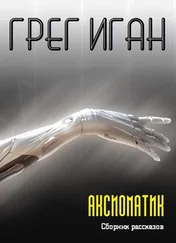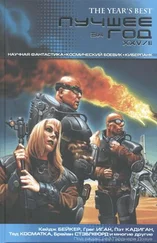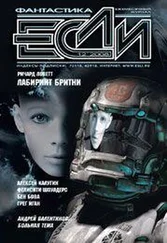Грег Иган - Permutation City
Здесь есть возможность читать онлайн «Грег Иган - Permutation City» весь текст электронной книги совершенно бесплатно (целиком полную версию без сокращений). В некоторых случаях можно слушать аудио, скачать через торрент в формате fb2 и присутствует краткое содержание. Жанр: Фантастика и фэнтези, Киберпанк, на английском языке. Описание произведения, (предисловие) а так же отзывы посетителей доступны на портале библиотеки ЛибКат.
- Название:Permutation City
- Автор:
- Жанр:
- Год:неизвестен
- ISBN:нет данных
- Рейтинг книги:4 / 5. Голосов: 1
-
Избранное:Добавить в избранное
- Отзывы:
-
Ваша оценка:
- 80
- 1
- 2
- 3
- 4
- 5
Permutation City: краткое содержание, описание и аннотация
Предлагаем к чтению аннотацию, описание, краткое содержание или предисловие (зависит от того, что написал сам автор книги «Permutation City»). Если вы не нашли необходимую информацию о книге — напишите в комментариях, мы постараемся отыскать её.
Permutation City — читать онлайн бесплатно полную книгу (весь текст) целиком
Ниже представлен текст книги, разбитый по страницам. Система сохранения места последней прочитанной страницы, позволяет с удобством читать онлайн бесплатно книгу «Permutation City», без необходимости каждый раз заново искать на чём Вы остановились. Поставьте закладку, и сможете в любой момент перейти на страницу, на которой закончили чтение.
Интервал:
Закладка:
These early models included a crude approximation of the brain, perfectly adequate for heart surgery or immunotherapy -- and even useful to a degree when dealing with gross cerebral injuries and tumours -- but worthless for exploring more subtle neurological problems.
Imaging technology steadily improved, though -- and by 2020, it had reached the point where individual neurons could be mapped, and the properties of individual synapses measured, non-invasively. With a combination of scanners, every psychologically relevant detail of the brain could be read from the living organ -- and duplicated on a sufficiently powerful computer.
At first, only isolated neural pathways were modeled: portions of the visual cortex of interest to designers of machine vision, or sections of the limbic system whose role had been in dispute. These fragmentary neural models yielded valuable results, but a functionally complete representation of the whole organ -- embedded in a whole body -- would have allowed the most delicate feats of neurosurgery and psychopharmacology to be tested in advance. For several years, though, no such model was built -- in part, because of a scarcely articulated unease at the prospect of what it would mean. There were no formal barriers standing in the way -- government regulatory bodies and institutional ethics committees were concerned only with human and animal welfare, and no laboratory had yet been fire-bombed by activists for its inhumane treatment of physiological software -- but still, someone had to be the first to break all the unspoken taboos.
Someone had to make a high-resolution, whole-brain Copy -- and let it wake, and talk.
In 2024, John Vines, a Boston neurosurgeon, ran a fully conscious Copy of himself in a crude Virtual Reality. Taking slightly less than three hours of real time (pulse racing, hyper-ventilating, stress hormones elevated), the first Copy's first words were: "This is like being buried alive. I've changed my mind. Get me out of here."
His original obligingly shut him down -- but then later repeated the demonstration several times, without variation, reasoning that it was impossible to cause additional distress by running exactly the same simulation more than once.
When Vines went public, the prospects for advancing neurological research didn't rate a mention; within twenty-four hours -- despite the Copy's discouraging testimony -- the headlines were all immortality, mass migration into Virtual Reality, and the imminent desertion of the physical world.
Paul was twenty-four years old at the time, with no idea what to make of his life. His father had died the year before -- leaving him a modest business empire, centered on a thriving retail chain, which he had no interest in managing. He'd spent seven years traveling and studying -- science, history and philosophy -- doing well enough at everything he tried, but unable to discover anything that kindled real intellectual passion. With no struggle for financial security ahead, he'd been sinking quietly into a state of bemused complacency.
The news of John Vines's Copy blasted away his indifference. It was as if every dubious promise technology had ever made to transform human life was about to be fulfilled, with a vengeance. Longevity would only be the start of it; Copies could evolve in ways almost impossible for organic beings: modifying their minds, redefining their goals, endlessly transmuting themselves. The possibilities were intoxicating -- even as the costs and drawbacks of the earliest versions sank in, even as the inevitable backlash began, Paul was a child of the millennium; he was ready to embrace it all.
But the more time he spent contemplating what Vines had done, the more bizarre the implications seemed to be.
The public debate the experiment had triggered was heated, but depressingly superficial. Decades-old arguments raged again over just how much computer programs could ever have in common with human beings (psychologically, morally, metaphysically, information-theoretically . . . ) and even whether or not Copies could be "truly" intelligent, "truly" conscious. As more workers repeated Vines's result, their Copies soon passed the Turing test: no panel of experts quizzing a group of Copies and humans -- by delayed video, to mask the time-rate difference -- could tell which were which. But some philosophers and psychologists continued to insist that this demonstrated nothing more than "simulated consciousness," and that Copies were merely programs capable of faking a detailed inner life which didn't actually exist at all.
Supporters of the Strong AI Hypothesis insisted that consciousness was a property of certain algorithms -- a result of information being processed in certain ways, regardless of what machine, or organ, was used to perform the task. A computer model which manipulated data about itself and its "surroundings" in essentially the same way as an organic brain would have to possess essentially the same mental states. "Simulated consciousness" was as oxymoronic as "simulated addition."
Opponents replied that when you modeled a hurricane, nobody got wet. When you modeled a fusion power plant, no energy was produced. When you modeled digestion and metabolism, no nutrients were consumed -- no real digestion took place. So, when you modeled the human brain, why should you expect real thought to occur? A computer running a Copy might be able to generate plausible descriptions of human behavior in hypothetical scenarios -- and even appear to carry on a conversation, by correctly predicting what a human would have done in the same situation -- but that hardly made the machine itself conscious.
Paul had rapidly decided that this whole debate was a distraction. For any human, absolute proof of a Copy's sentience was impossible. For any Copy, the truth was self-evident: cogito ergo sum. End of discussion.
But for any human willing to grant Copies the same reasonable presumption of consciousness that they granted their fellow humans -- and any Copy willing to reciprocate -- the real point was this:
There were questions about the nature of this shared condition which the existence of Copies illuminated more starkly than anything which had come before them. Questions which needed to be explored, before the human race could confidently begin to bequeath its culture, its memories, its purpose and identity, to its successors.
Questions which only a Copy could answer.
+ + +
Paul sat in his study, in his favorite armchair (unconvinced that the texture of the surface had been accurately reproduced), taking what comfort he could from the undeniable absurdity of being afraid to experiment on himself further. He'd already "survived" the "transition" from flesh-and-blood human to computerized physiological model -- the most radical stage of the project, by far. In comparison, tinkering with a few of the model's parameters should have seemed trivial.
Durham appeared on the terminal -- which was otherwise still dysfunctional. Paul was already beginning to think of him as a bossy little djinn trapped inside the screen -- rather than a vast, omnipotent deity striding the halls of Reality, pulling all the strings. The pitch of his voice was enough to deflate any aura of power and grandeur.
Squeak. "Experiment one, trial zero. Baseline data. Time resolution one millisecond -- system standard. Just count to ten, at one-second intervals, as near as you can judge it. Okay?"
"I think I can manage that." He'd planned all this himself, he didn't need step-by-step instructions. Durham's image vanished; during the experiments, there could be no cues from real time.
Paul counted to ten. The djinn returned. Staring at the face on the screen, Paul realized that he had no inclination to think of it as "his own." Perhaps that was a legacy of distancing himself from the earlier Copies. Or perhaps his mental image of himself had never been much like his true appearance -- and now, in defense of sanity, was moving even further away.
Читать дальшеИнтервал:
Закладка:
Похожие книги на «Permutation City»
Представляем Вашему вниманию похожие книги на «Permutation City» списком для выбора. Мы отобрали схожую по названию и смыслу литературу в надежде предоставить читателям больше вариантов отыскать новые, интересные, ещё непрочитанные произведения.
Обсуждение, отзывы о книге «Permutation City» и просто собственные мнения читателей. Оставьте ваши комментарии, напишите, что Вы думаете о произведении, его смысле или главных героях. Укажите что конкретно понравилось, а что нет, и почему Вы так считаете.









![Грег Иган - Рассказы [компиляция]](/books/419837/greg-igan-rasskazy-kompilyaciya-thumb.webp)
